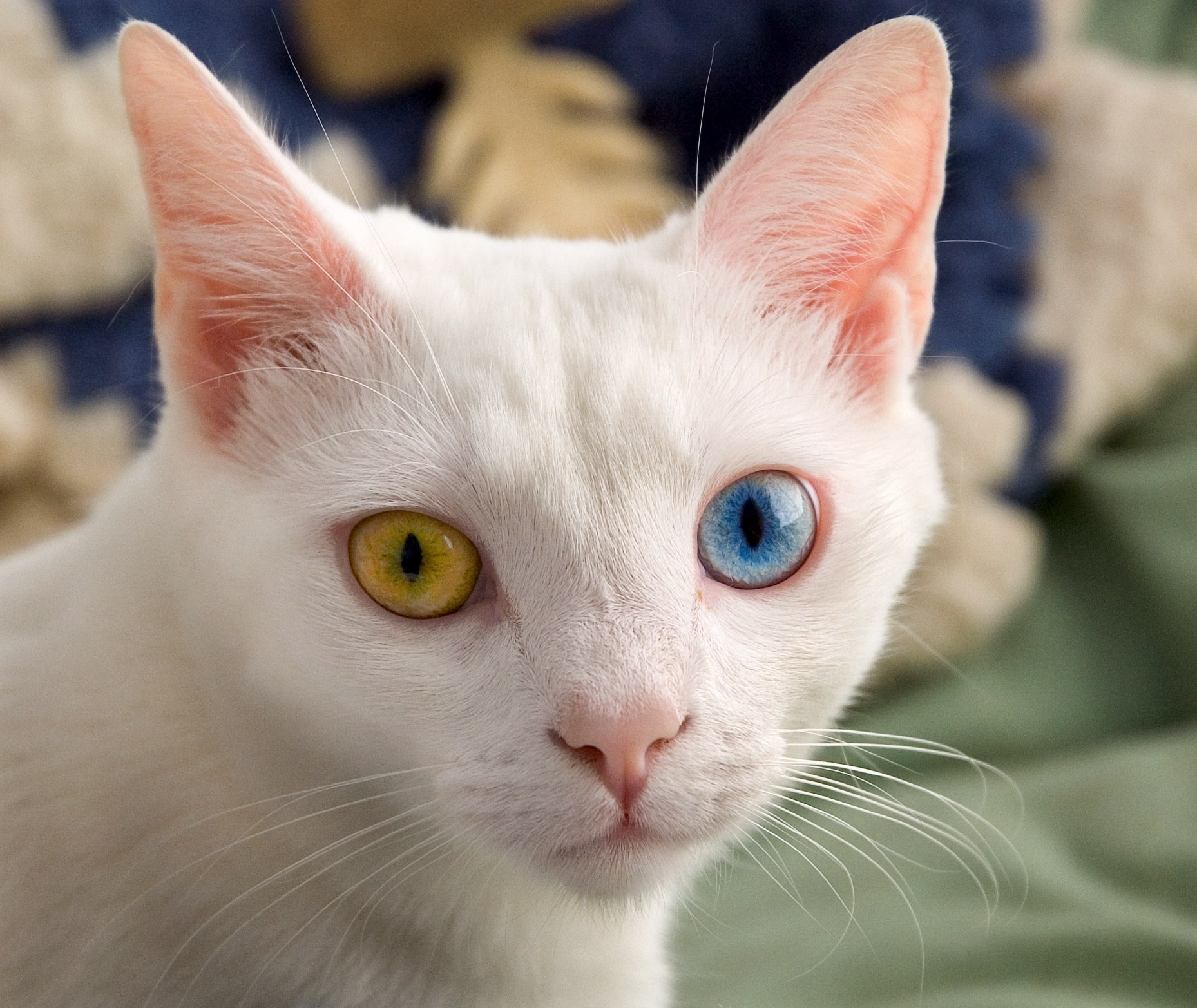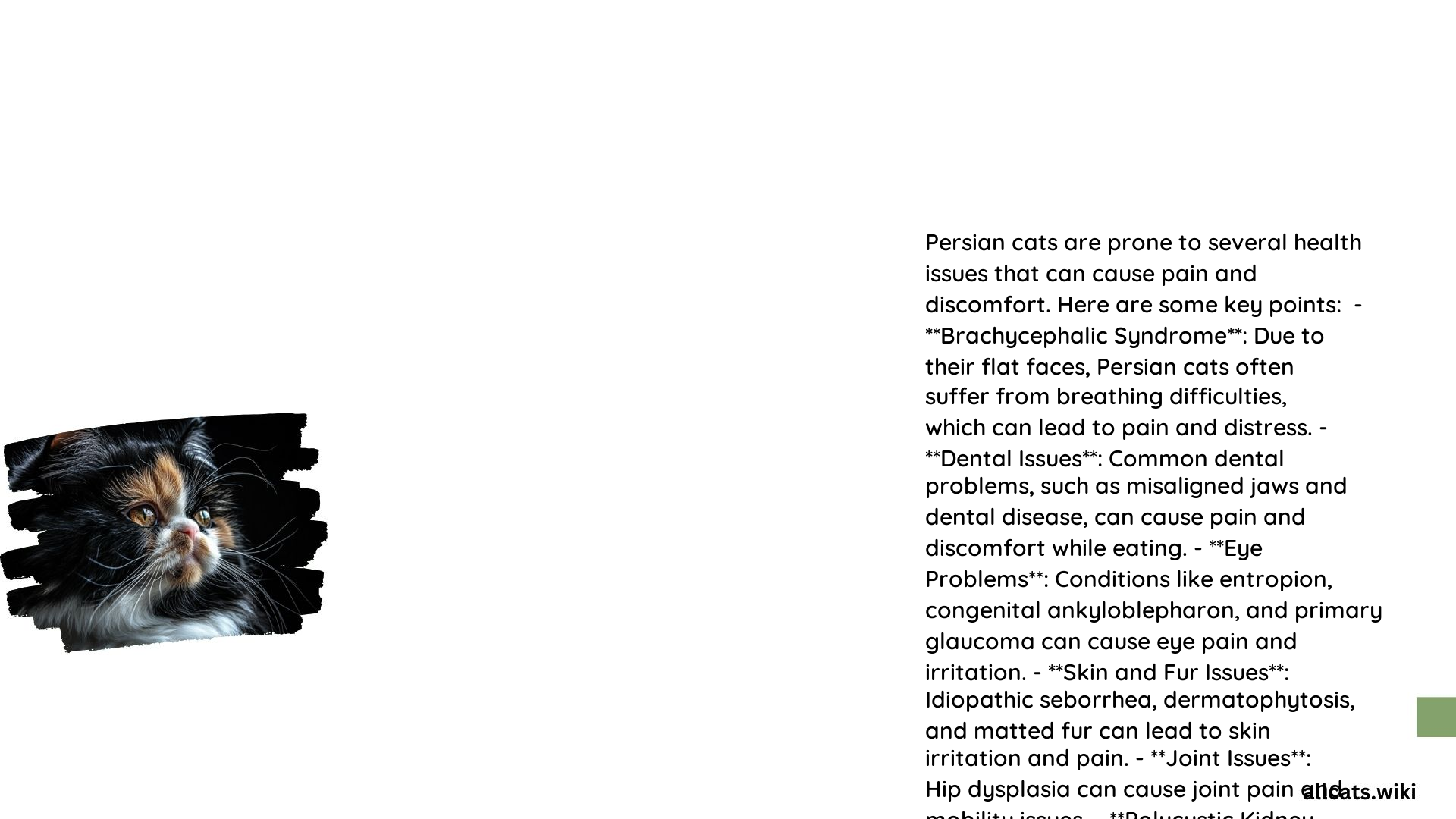Summary

Persian cats, due to their brachycephalic face structure, are prone to chronic pain and discomfort. This anatomical feature leads to respiratory issues, dental problems, and eye problems, all of which can cause significant pain and discomfort for these feline companions. Additionally, common health issues like haircoat disorders, dental disease, and eye discharge can further contribute to the pain experienced by Persian cats. Proper management, including surgical interventions, regular veterinary care, and attentive grooming, is crucial to mitigate the pain and improve the overall well-being of these beloved pets.
What Causes Pain in Persian Cats?

Chronic Pain Due to Brachycephalic Face Structure
Persian cats, due to their brachycephalic face structure, are indeed prone to chronic pain and discomfort. The brachycephalic face structure leads to a narrow and obstructed airway, which can cause significant breathing difficulties. This condition, known as Brachycephalic Airway Syndrome (BAS), results in symptoms such as noisy breathing, coughing, snoring, and panting. These respiratory issues can lead to chronic discomfort and pain, especially during exercise or in hot weather.
The crowded teeth in a smaller jaw space can also lead to dental infections, malocclusion, and improper tooth development. These dental issues can cause mouth pain and difficulty eating, contributing to chronic pain. Additionally, the shallow eye sockets and large eyes of Persian cats make them prone to eye injuries, ulcerations, and chronic tear staining due to persistent epiphora. These conditions can cause eye dryness and discomfort, as the eyelids may not close completely. The skin folds on the face can also predispose Persian cats to bacterial or fungal skin infections, leading to itchy skin and discomfort.
What Common Health Issues Cause Pain in Persian Cats?
Haircoat Disorders
While haircoat disorders themselves may not directly cause pain, they can lead to skin irritation and discomfort. For example, matting and tangling of fur can cause skin lesions and irritation, which may be painful. Regular grooming is essential to prevent these issues.
Dental Disease
Dental disease is a significant source of pain for Persian cats. Malocclusion and crowded teeth can lead to dental infections, gum inflammation, and difficulty eating. These conditions can cause chronic mouth pain and discomfort. Regular dental care, including professional cleaning and monitoring, is crucial to manage dental disease.
Eye Discharge
Eye discharge, often due to chronic epiphora, can cause facial irritation and discomfort. The constant tearing can lead to skin irritation around the eyes, and if left untreated, can result in more severe eye conditions such as corneal ulcers or sequestra. Proper eye care, including regular cleaning and veterinary check-ups, is necessary to manage this condition.
How Does Brachycephalic Airway Syndrome Cause Pain in Persian Cats?
Brachycephalic Airway Syndrome (BAS) is a major health concern for Persian cats, causing significant breathing difficulties. The syndrome involves narrowed nostrils, an elongated soft palate, and sometimes a narrow trachea, which obstruct the airway. This can lead to chronic respiratory distress, including symptoms like noisy breathing, snoring, and open-mouth breathing. These breathing issues can cause considerable discomfort and pain, especially during physical activity or in hot weather.
Managing BAS often involves surgical interventions to correct the anatomical defects, such as shortening the soft palate and widening the nostrils. These surgeries can significantly improve breathing and reduce associated pain and discomfort. Additionally, keeping the cat cool, avoiding obesity, and ensuring regular veterinary check-ups are crucial for managing the condition.
The severity of BAS can vary among Persian cats, but it is a common issue due to their brachycephalic face structure. Many cats with this syndrome experience chronic respiratory problems, which can worsen over time if not addressed. Early surgical intervention and proper care can help mitigate the severity of these breathing issues and the associated pain.
Conclusion
In conclusion, Persian cats are indeed prone to chronic pain and discomfort due to their brachycephalic face structure and common health issues. The narrow and obstructed airway, dental problems, eye issues, and skin fold infections can all contribute to the pain experienced by these feline companions. Proper management, including surgical interventions, regular veterinary care, and attentive grooming, is crucial to mitigate the pain and improve the overall well-being of Persian cats.
References
-
International Cat Care: “Severe brachycephalic in Persian and related breeds” – This article provides detailed information on the health issues associated with the brachycephalic face structure in Persian cats, including respiratory, dental, and eye problems.
-
Pleasant Hill Animal Hospital: “Persian | Pleasant Hill Animal Hospital” – This source discusses Brachycephalic Syndrome in detail, including its impact on breathing, dental health, and overall well-being of Persian cats.
-
Veterinary Village: “Persian | Veterinary Village” – This article elaborates on the health risks associated with the brachycephalic face structure, including respiratory issues, dental problems, and skin fold infections.
